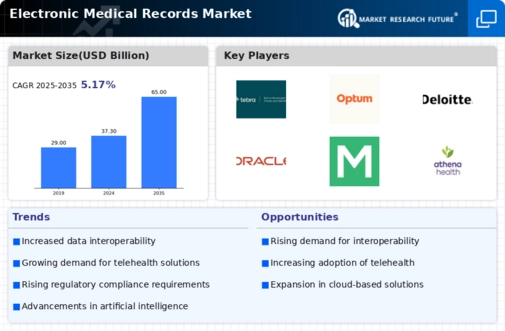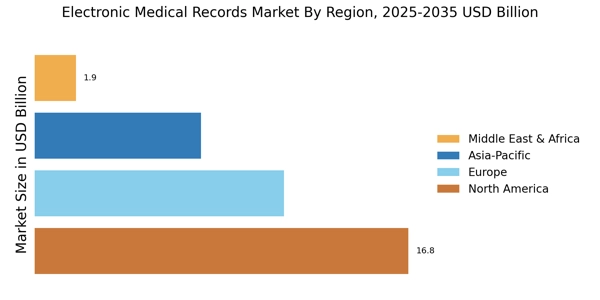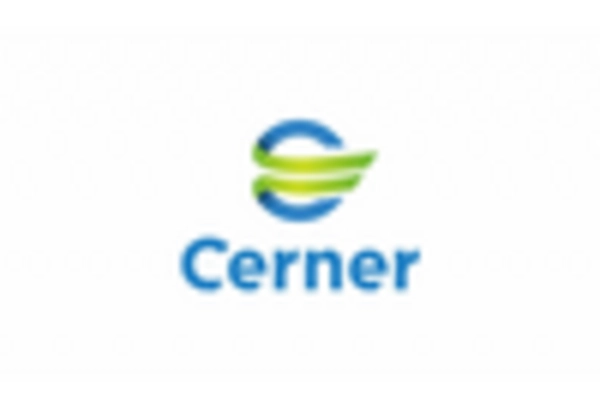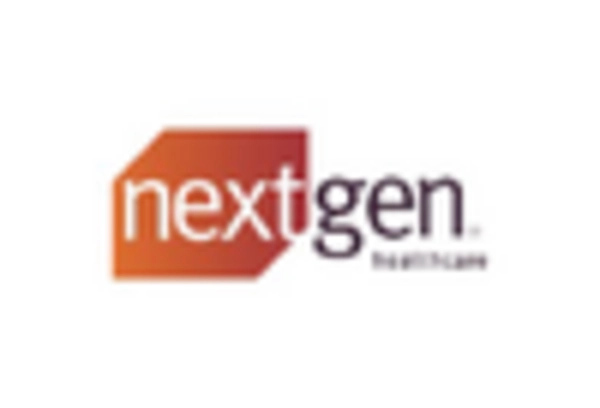Regulatory Compliance
Regulatory compliance remains a critical driver for the Electronic Medical Records Market. Governments and health organizations are implementing stringent regulations to ensure the security and privacy of patient data. Compliance with standards such as HIPAA in the United States and GDPR in Europe necessitates the adoption of robust EMR systems that can safeguard sensitive information. This regulatory landscape compels healthcare providers to invest in advanced EMR solutions that not only meet compliance requirements but also enhance operational efficiency. The increasing focus on data protection is expected to propel the growth of the Electronic Medical Records Market, as organizations seek to avoid penalties and maintain patient trust.
Technological Advancements
The Electronic Medical Records Market is experiencing a surge in technological advancements that enhance the functionality and usability of EMR systems. Innovations such as artificial intelligence, machine learning, and cloud computing are being integrated into EMR solutions, allowing for improved data management and patient care. For instance, AI algorithms can analyze patient data to predict health outcomes, thereby facilitating proactive healthcare measures. The market is projected to grow at a compound annual growth rate of approximately 5.5% from 2023 to 2030, driven by these technological enhancements. As healthcare providers increasingly adopt these advanced systems, the Electronic Medical Records Market is likely to witness a significant transformation in how patient information is recorded and utilized.
Increased Focus on Patient Engagement
An increased focus on patient engagement is reshaping the Electronic Medical Records Market. Healthcare providers are recognizing the importance of involving patients in their own care processes, which necessitates the development of user-friendly EMR systems. Features such as patient portals and mobile applications enable patients to access their health information, schedule appointments, and communicate with providers. This shift towards patient-centric care is likely to enhance patient satisfaction and improve health outcomes. As a result, the demand for EMR systems that prioritize patient engagement is expected to rise, further driving the growth of the Electronic Medical Records Market.
Rising Demand for Telehealth Services
The rising demand for telehealth services is significantly influencing the Electronic Medical Records Market. As healthcare systems adapt to the growing preference for remote consultations, the integration of EMR systems with telehealth platforms becomes essential. This integration allows for seamless access to patient records during virtual visits, ensuring continuity of care. According to recent estimates, the telehealth market is expected to reach USD 459.8 billion by 2030, which in turn drives the need for compatible EMR solutions. Consequently, healthcare providers are increasingly investing in EMR systems that support telehealth functionalities, thereby fostering growth within the Electronic Medical Records Market.
Cost Efficiency and Operational Improvement
Cost efficiency and operational improvement are pivotal drivers for the Electronic Medical Records Market. Healthcare organizations are increasingly seeking ways to reduce operational costs while enhancing service delivery. EMR systems streamline administrative processes, reduce paperwork, and minimize errors, leading to significant cost savings. A study indicates that hospitals that implement EMR systems can save up to 20% in operational costs over time. This financial incentive encourages more healthcare providers to adopt EMR solutions, thereby contributing to the expansion of the Electronic Medical Records Market. As organizations strive for greater efficiency, the demand for effective EMR systems is likely to continue its upward trajectory.


















Leave a Comment